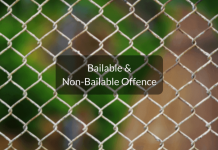This article is written by Raj Maitrey who is pursuing a Certificate Course in Advanced Criminal Litigation & Trial Advocacy from LawSikho.
Table of Contents
Introduction
Our criminal justice system is slow, inefficient, and more often than not ineffective. This is reflected by our jail populations. This is just the tip of the iceberg, the problems in our system are deeper than just the industrial population in prisons. This article will discuss these problems and give possible solutions.
Police
The police in India are one of the most understaffed police forces in the world. There’s a lack of trust in our police force and tales of custodial torture at the hands of the police are commonplace. The first problem in the police force is of vacancies there’s a 30% vacancy rate. This is why out of the 2.8 million sanctioned posts only 1.9 are occupied. There are only 144 officers for every 100,00 citizens against the UN recommendation of 222 officers for every 100,000 citizens. This isn’t uniform throughout the country and varies in different states. States like Uttar Pradesh and Bihar have lower than 100 officers for every 100,000 citizens. A small police force leads to the pendency of cases and a delay in the filing of the charge sheet. The latest data shows that 30% of all cases filed in 2016 were pending investigation.
The second problem with our police force is the method in which the investigation is carried out. Custodial deaths and torture are shockingly common in India. 1674 custodial deaths were recorded between April 2017 and February 2018 averaging 5 deaths per day. NCRB data from 2005-18 shows that 593 registered cases of custodial deaths only led to 7 convictions. A majority of the victims of such death and torture belong to marginalized communities. Methods of torture range from forced oral sex, inserting objects in the anus, inserting needles in fingernails to urination in mouths, and giving electric shocks to genitals. In such situations, the victims are willing to say anything just to make the pain stop. The death penalty project of NLU-Delhi details such accounts of prisoners where they were made to sign blank documents which led to a staged recovery of facts and finally led to their conviction. Given the inhuman methods of investigation, the conviction of innocent people is more than probable.
Why do the police resort to third-degree torture methods?
- Inadequate infrastructure- Forensic labs which are essential for examining evidence take months in sending back reports. This leads to delays in filing the charge sheet and finding the culpability of the accused.
- Time in custody- Under the law, the accused has to be produced before the magistrate in 24 hours. In most cases, this means that the police only have 12-13 hours to interrogate the accused. This time constraint causes them to use torture to extract confessions.
- Section 27 of the Indian Evidence act 1872- Any confession given to police is inadmissible under Section 25. However, Section 27 allows admissibility of materials discovered because of a confession and the part of the confession that led to the discovery. For example, let’s say Z is arrested for theft. If Z confesses the location of the stolen goods and they are recovered they can be used in courts to prove Z’s guilt. It is highly unlikely that Z will make such a confession voluntarily and the only way to get it will be through force or coercion.
Recommendations for the police force
- All vacancies in the police force must be filled in addition to that there must be more recruitment. An increase in the recruitment of women/trans/LGBTQ officers must take place; this will increase representation in the police force and increase reporting of crimes against these communities. There are accounts of women and trans people facing harassment at the hands of the police while filing complaints. Increasing women will improve reporting of crimes such as rapes and domestic violence likewise trans people in the police force will reduce stigma against their communities.
- Despite various safeguards in our constitution torture still is a part of an investigation in India. The reason for this is torture is considered an effective method to solve crimes by leading to the recovery of evidence. Torture can only be replaced if the replacement interrogation technique is as effective and more humane. Forensic psychology is a field including methods such as brain fingerprinting, brain scanning, lie detector tests, and narco-analysis tests. While none of these tests are perfect they can help in recovering evidence and replace torture. This will require increased government funding to modernize all existing forensic labs as well as create new forensic labs. Furthermore, the police force will have to regularly be trained on the latest and most effective interrogation techniques. Currently, such techniques can only be used after the consent of the accused after the 2010 Selvi judgment. However, to replace torture in practice it is important to reconcile the efficiency of the police’s interrogation methods and the human rights of the accused. The application of these tests without the consent of the accused may not be ideal but will be much more humane than the methods of torture that are prevalent today. This may be a necessary trade-off to retain the efficiency of the police as well as stopping torture.
- Alternatives to torture will not be enough there must be legislation specifically dealing with torture. India must ratify the UN Convention against torture. Domestic legislation giving a stringent punishment for torture as well as custodial torture is required.
Prisons
Our criminal justice system aims for reform in criminals. This is the reason that they are sent to prisons. Indian prisons however serve as halls of retribution where prisoners face sexual abuse, violence, torture, and extortion at the hands of other inmates and the jail staff. Indian jails have consistently been overcrowded. As per Prison statistics in India 2019, the capacity of prisons increased by 1.90% but prisoners increased by 2.69% compared to 2018. Tihar jail, one of the largest prisons in Asia, has an occupancy rate of 174.9% housing 7,508 more prisoners than its given capacity of 10,026. On average the nationwide occupancy rate is 114% and the vacancy rate for prison staff is 33%.
70% of our jail population consists of undertrials. These are people who haven’t been convicted and are awaiting trial. Some of these undertrials will be acquitted over time but not before being raped and dehumanized at the hands of other inmates. These people will also end up losing valuable years of their lives for crimes they didn’t commit. The prison system does not affect everyone equally; the rich and powerful inmates live comfortably because they manage to bribe all jail officials while the poor inmates (who usually end up in prisons because of little or no legal representation) live in pathetic conditions. It’s this nexus of corruption between the inmates and jail officials that prevents reform. These powerful inmates then end up terrorizing the rest of the prison population. The prison system is even worse for transgender prisoners who have no separate prisons and are often housed with male prisoners. Furthermore, a lot of prisons follow outdated manuals which advocate caste-based labor. All of these problems compound to create an inefficient system.
Recommendations for prisons
Overcrowding
For reducing overcrowding firstly undertrials should be housed separately from other convicted criminals. Many of these people may be innocent. The problem of funding for prisons can be solved through the privatization of prisons. Contracts can be drawn to make sure none of the rights of the prisoners are violated and due process is followed. Since even undertrials have the right of presumption of innocence they should be housed in open jails. Where they have freedom of movement and only need to return at night. Such jails already exist in some states. If all undertrials are housed separately in this way and there are new jails made through private corporations, overcrowding will reduce substantially.
Rapes
Rapes are rampant in Indian prisons. In his book Black Warrant: confessions of a Tihar jailer; Sunil Gupta details how Kiran Bedi. During her tenure floated the idea of introducing condom vending machines in prison probably to curb the epidemic of HIV in jails. While her intentions were surely noble she may have found more support if she focused on tackling sexual abuse rather than facilitating it. The idea was eventually shelved. To solve the problem of sexual abuse in prisons there must be an effective redressal mechanism. Complaints in most jails aren’t taken seriously officials just tell victims that these things happen and they should deal with them.
For this first overcrowding in prisons must be reduced. At the same time, the number of prison guards must increase. Complaints against offenders must be taken very seriously and stringent punishment must be given. Repeat offenders should be shifted to separate jails. A lot of individuals in jails turn to homosexuality because they are serving for life and have little or no interaction with the outside world. Prisoners should be allowed to visit their families outside the jail once a month and prisoners on good behavior once a week. This will allow them to pursue conjugal relations outside the prison and will help reduce rapes in prisons. There should be CCTV cameras in cells as well as washrooms. Prison guards must act swiftly in cases of any altercation or noise. Prison guards should have increased salaries so they don’t accept bribes. Action should be taken against anyone who takes bribes. Prison guards should have the protective gear so that they aren’t intimidated or threatened by the inmates. In female prisons, in addition to these steps, all the jail staff should only include females. All convicts are also humans and all their rights must be upheld
Transgenders
Trans people are more vulnerable to violence because of an already existing stigma. There must be separate prisons for transgenders. This will help reduce violence against their community in prisons. These steps should also be followed for other sexual minorities such as lesbian, gay, bisexual, and intersex persons.
Judiciary
The judiciary creates a bottleneck for cases that stop timely justice. The cases pending before courts are astronomical. According to data as of 28th May 2021, the criminal cases pending before all-district and taluka courts are 2,82,52,633. 78% of these cases have been pending for more than a year and 7.69% have been pending for over 10 years. 3,74,099 cases (1.32%) have been pending for over 20 years and all this is not including the cases pending before the high courts, tribunals, and other courts. The ‘Zero Pendency Courts Project’ was the first such project that aimed to study what causes delays in cases and how to improve on that. There were many reasons for delays; absence of witnesses, unnecessary adjournments, and delay in service summons were some of the reasons. One simple solution will be to increase the number of judges in all courts. Judiciary should be made a more lucrative career option with an increase in salaries and other perks. Furthermore, there should be more pilot projects to study the reasons for delays in different states. This will give a more accurate result and changes based on these studies should be implemented.
Conclusion
Our criminal justice system has a lot of problems. Many of these problems have been persisting for decades with little or no change. These are a result of deep systemic failures and they can only be solved with the political and public will. There must be aware of how unjust our justice system is. While this will be nothing new for lawyers, judges in the criminal justice system it is the public that must know of these problems. While many of the recommendations in this article may seem utopian or almost impossible it is the system we must strive for. When innocent people are killed and tortured it is not just the police, the judges, the prosecutors who are guilty it’s us the public who is just as complicit. We perpetuate the system and allow it to exist, we read these articles in newspapers and still go about our lives like nothing has happened. Don’t let this be just another article you read, make some conscious change and do something in your power anything in your power that will make all the difference
References
- https://www.firstpost.com/india/criminal-justice-system-in-india-skewed-against-the-poor-judiciary-losing-credibility-due-to-repeated-legal-oversights-4402129.html
- https://www.livemint.com/Politics/1vsBJNtsqgpzUlV31BbmWL/Why-the-wheels-of-justice-turn-ever-slower-in-India.html
- https://criminallawstudiesnluj.wordpress.com/2020/10/25/the-state-of-undertrial-incarceration-in-india/#:~:text=Undertrial%20prisoners%20formed%2070%25%20of,only%2091%20were%20civil%20inmates.
- https://timesofindia.indiatimes.com/city/delhi/rampant-sexual-abuse-is-a-real-nightmare-in-tihar/articleshow/47621742.cms
- https://www.theleaflet.in/not-reliable-or-satisfactory-indias-criminal-justice-and-judiciary-needs-reform/
Students of Lawsikho courses regularly produce writing assignments and work on practical exercises as a part of their coursework and develop themselves in real-life practical skills.
LawSikho has created a telegram group for exchanging legal knowledge, referrals, and various opportunities. You can click on this link and join:
 Serato DJ Crack 2025Serato DJ PRO Crack
Serato DJ Crack 2025Serato DJ PRO Crack










 Allow notifications
Allow notifications



